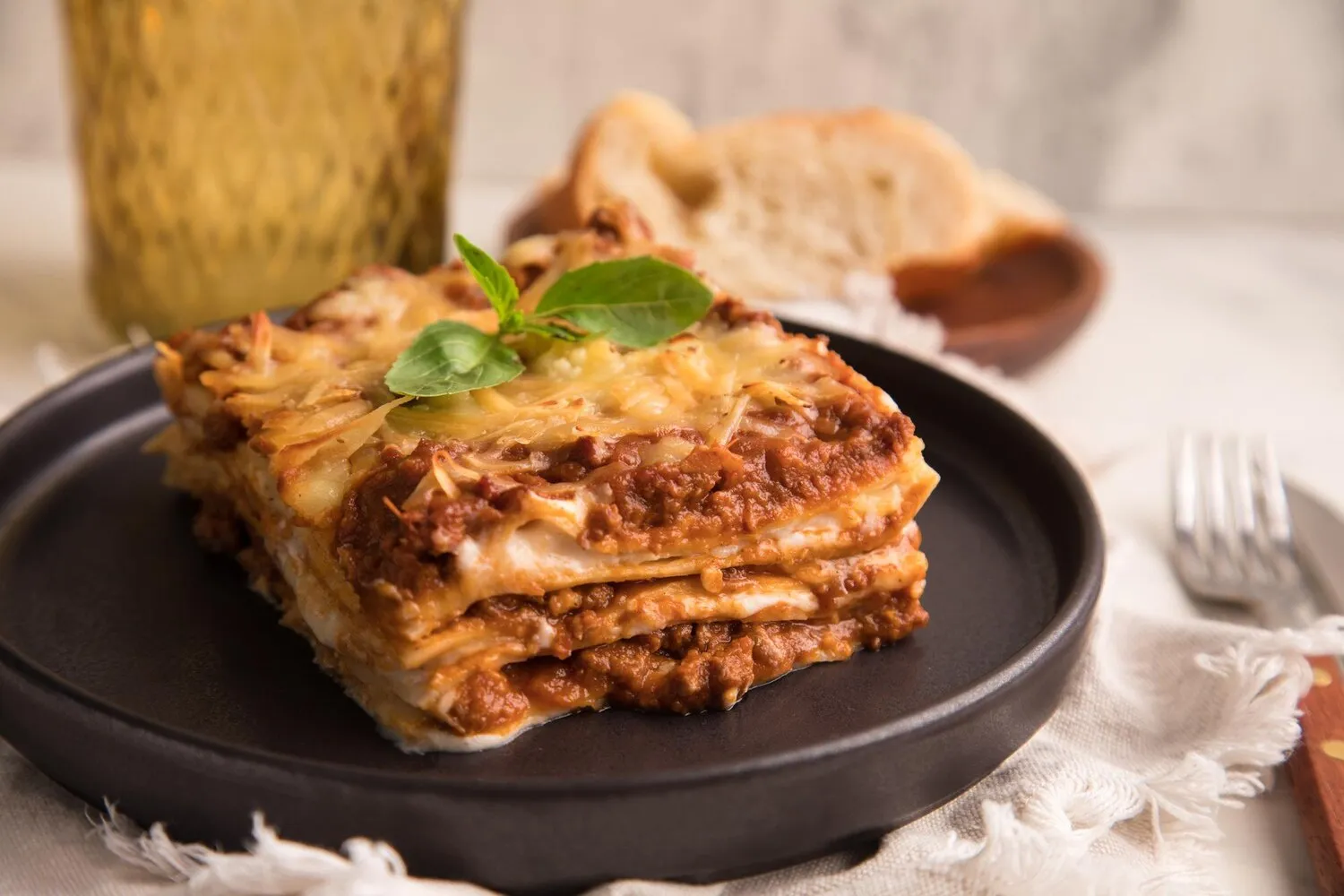
Polenta cremosa com ragu de cogumelos
Creamy polenta served with mushroom ragu. Many reviews mention the polenta, indicating that it is a characteristic dish of the restaurant.
Nutrition Facts
* The % Daily Value (DV) tells you how much a nutrient in a serving of food contributes to a daily diet. 2,000 calories a day is used for general nutrition advice.
Bona Trattoria
Polenta, a humble dish made from cornmeal, has been a staple in Northern Italy for centuries. Before the introduction of corn from the Americas, polenta was made from other grains like barley, spelt, or chestnut flour. Its affordability and versatility made it a crucial part of the diet for peasants and working-class families. The addition of ragu, a rich and slow-cooked sauce, elevated polenta from simple sustenance to a more flavorful and satisfying meal. Mushroom ragu, in particular, utilizes readily available foraged ingredients, reflecting a connection to the land and resourcefulness.
Polenta holds a significant place in Italian culinary culture, particularly in the northern regions. It represents resourcefulness, tradition, and the importance of simple, wholesome ingredients. Sharing a bowl of polenta is often associated with warmth, family, and convivial gatherings.
Regional Variations
Polenta varies significantly across different regions of Italy. The type of cornmeal used, the cooking method, and the accompanying sauces all contribute to the unique character of each regional variation. Some regions prefer a coarser grind for a heartier texture, while others opt for a finer grind for a smoother, more delicate polenta.
Comfort Food
Polenta is often considered a quintessential comfort food in Italy. Its warm, creamy texture and simple flavors evoke feelings of nostalgia and connection to home. It's a dish that is often enjoyed during colder months, providing a sense of warmth and satisfaction.
Seasonal Ingredients
The accompanying sauces and toppings for polenta often reflect the seasonality of ingredients. Mushroom ragu is particularly popular during the autumn months when wild mushrooms are abundant.
This dish features a harmonious blend of earthy, savory, and creamy flavors. The polenta provides a comforting and slightly sweet base, while the mushroom ragu contributes a deep umami richness and textural complexity.
The creamy polenta offers a mild, slightly sweet corn flavor that is both comforting and satisfying. It's typically seasoned with butter, parmesan cheese, and salt to enhance its richness. The mushroom ragu is a symphony of earthy and savory notes, derived from a variety of mushrooms such as porcini, cremini, or shiitake. These mushrooms are often sautéed with garlic, onions, herbs (like thyme or rosemary), and sometimes a splash of wine or broth to create a complex and flavorful sauce. The ragu is often finished with a touch of cream or butter for added richness and a sprinkle of parmesan cheese to tie the dish together.
Slow and Steady Polenta
Cook the polenta low and slow, stirring frequently, to prevent lumps and ensure a creamy texture. Use a whisk initially to break up any clumps of cornmeal, then switch to a wooden spoon as it thickens.
Mushroom Magic
Don't overcrowd the pan when sautéing the mushrooms. Sauté them in batches to allow them to brown properly and develop a richer flavor. A splash of dry white wine or Marsala wine can add depth to the ragu.
Parmesan Power
Don't skimp on the Parmesan cheese! Use freshly grated Parmesan cheese both in the polenta and as a garnish for the ragu. The salty, umami-rich cheese adds a delightful savory note.
Seasoning is key
Taste and adjust seasoning frequently. Salt is essential for bringing out the flavors of both the polenta and the ragu. Fresh herbs like thyme or rosemary elevate the flavor profile.
Explore additional Italian dishes and restaurants
Explore ItalianDiscover top dining spots and culinary experiences in Foz do Iguaçu.
Explore Foz do IguaçuLearn more about the food culture, restaurant scene, and culinary heritage of Brazil.
Explore Brazil